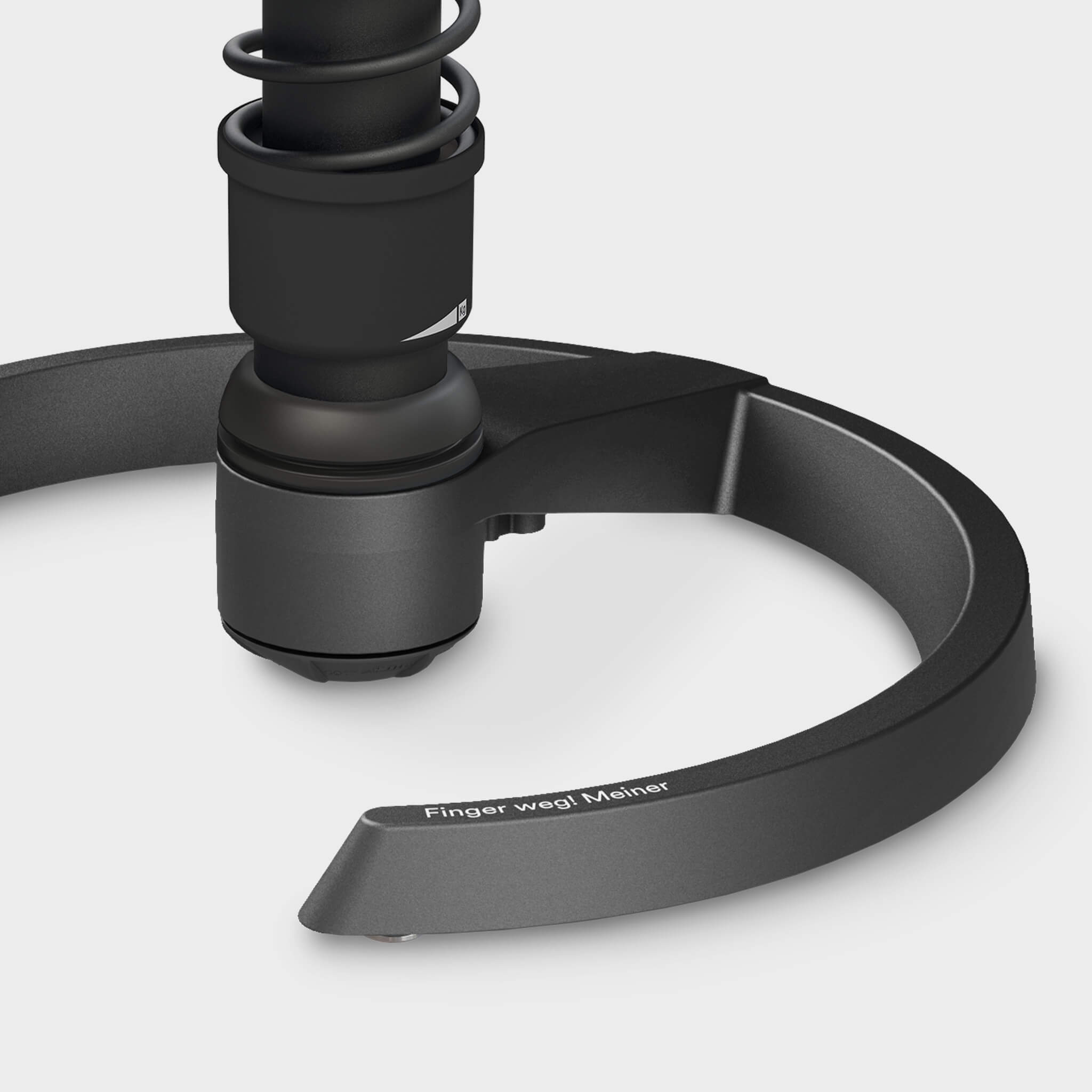Are you sitting comfortably? If you can't answer this question with "yes" straight away, it could be because the seat height is wrong. The correct adjustment of your office chair is not only a question of comfort, but also of back health. An incorrect seat height can lead to back pain, tension and other problems in the long term. Find out in this article how to find the perfect seat height that not only saves you pain, but also increases your productivity at work.
Why the right seat height is important
Sitting for hours is part of everyday life for many people. But an incorrect sitting position, which often starts with a poorly adjusted seat height, can lead to health problems in the long term. The classic: back pain. But tension in the neck, sore shoulders and even headaches can also be the result.
If your office chair is correctly adjusted to your height, you will support your body in its natural sitting position. This will not only prevent pain, but will also help you get through the day feeling fresher and more focused. To achieve this, you should also consider general ergonomics in the workplace .
The optimal seat height of your office chair – tailor-made for your body
The ideal seat height for your office chair depends on several factors, including your height and the specific requirements of your workplace. For most people, the optimal seat height is between 42 and 55 cm , but this value can vary depending on height and preferences.
A little trick to give you a rough idea: your seat height should be about 25% of your height. So if you are 180 cm tall, your seat height should be about 45 cm. This is of course just a guideline - your individual preferences and the nature of your workplace also play a role.
Calculating seat height – here's how
A practical method for calculating the optimal seat height is, as already mentioned above, the 25% rule . In the table you will find some guidelines for rough orientation:
| Height | Seat height of the chair |
| 150cm | approx. 37.5cm |
| 160cm | approx. 40cm |
| 170cm | approx. 42.5cm |
| 180cm | approx. 45cm |
| 190cm | approx. 47.5cm |

An optimal seat height ensures relaxed and productive work. Make sure that your knees are at a 90-degree angle and your feet are flat on the floor.
Further adjustment options for your office chair
To make a more precise adjustment to the seat height of your office chair, your feet should be flat on the floor and your knees should form a 90-degree angle . Here are three simple steps to correctly adjust the seat height of your office chair:
-
Sit up straight : your hips should be slightly higher than your knees and your back should be relaxed.
-
Feet on the floor : Make sure your feet are completely on the floor - with no floating feet or legroom.
-
Shoulders relaxed, arms relaxed : Your arms should rest on the table top at a 90-degree angle without pulling your shoulders up.
Many people tend to set the seat height of their chair too high or too low, which leads to an unnatural posture over time. Therefore, test your setting regularly and optimize it if necessary.
A continuous height adjustment on the chair allows you to adjust the seat height to your individual needs, which is particularly important for a healthy posture. Also make sure that no unpleasant pressure is exerted on your thighs when sitting so that blood circulation is not impeded. A seat cushion can also be helpful to improve the seat height and optimize the sitting position.
Why individual adaptation is crucial
Everyone has different body proportions, sitting habits and work requirements. It is therefore important to regularly adjust the seat height to suit your individual needs. Pay attention to your height, desk height and your activity. Small people and children in particular benefit from adjustable chairs. Do you often switch between sitting and standing? An ergonomic office chair such as the Aeris Numo Task or the Aeris 3Dee provides the necessary flexibility.
Chair height vs. seat height: what’s the difference?
The terms chair height and seat height are often used synonymously, but there is a subtle difference.
The chair height describes the total height of the chair, i.e. from the floor to the top of the backrest. However, this is of secondary importance for ergonomics in the workplace.
The decisive factor, however, is the seat height . It describes the distance from the floor to the seat - and this distance determines how healthy and comfortable you sit. The right seat height ensures that you sit dynamically and ergonomically without affecting your posture.
Ergonomics is more than just seat height
Of course, it is not enough to just optimize the seat height. Your entire workstation should be ergonomically designed . Your screen should be at eye level and the chair should flexibly adjust to your body - not the other way around. Armrests are not absolutely necessary to support an ergonomic sitting position. What is more important is that you adopt an active and healthy sitting position.
Don't forget to get up and move around regularly. Static sitting is the enemy of your health. Movement keeps you fit, increases your concentration and improves your mood. Ergonomic office chairs like the Aeris Numo Task with its innovative kinematics and SAM technology allow you to do just that - move while sitting.
With the right seat height for more well-being at work
The right seat height is crucial for your long-term well-being at work. An individually adjusted seat height not only helps you avoid pain and tension, but also increases your productivity . Make sure that you check and adjust your seat height regularly to ensure a permanently ergonomic sitting posture.
